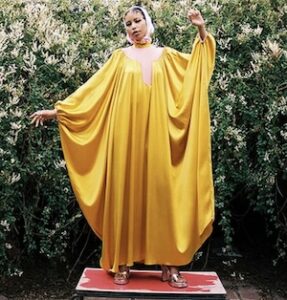WATER: Fluid Design
By Shannon Brien
Japanese architect, Endo Shuhei, approaches his designs as if they are Zen riddles, poised to change entirely once the riddle is solved. He believes that “the architect today is groping for plausible paramodern architecture that can open up new possibilities by overcoming the self imposed limitation of modern architecture”, which is evident in his work. The bold building style has become synonymous with Shuhei who uses materials such as industrial corrugated steel as it can be bent, folded, rolled and moulded to create his pieces.
During June’s London Festival of Architecture Shuhei released the exhibition ‘Paramodern Architecture 25/25’, on until July 14, displaying 25 models of his work whilst also celebrating the 25th anniversary of the establishment of his the Endo Shuhei Architect Institute.
These designs embrace elements of traditional Japanese architecture like openness with fluidity and a style that is distinctly his own. He says that ‘social responsibility is implicit in architecture’, which is why his buildings in Japan are designed in such a way that they help protect people from natural disasters and reveal that his architecture has intent and deep layers of meaning.
Koray Malhan, Director of Design at Turkish design brand Koleksiyon takes a holistic approach to his designs, equating his masterpieces to jazz music – free flowing and expressive like the sounds of his favourite musicians; Chet Baker, John Coltrane and Miles Davis, as well as classical music.
Like music, design has strict guidelines it must adhere to but there is also room for bending the rules. “The readings into the minds of such creators and their ways of bending dimensions and changing all accepted rule as we know it is a deep inspiration to me. Especially when I am trying to imagine the next relevant questions for our times…I believe music is the most universal expression among all humans”, Malhan says.
His self-criticism is his biggest motivator, “a never ending dilemma that drives me in the direction that I take”, but ultimately his work makes him happy. One piece in particular is Ikaros, “a sofa that can be used as a working set up, a piece that has no front or back but can be approached and used from all sides”.
His biggest challenge came in the form of a piece named Oblivion which remains on going due to its open structural qualities, which “is the most exciting part as it inherits an element of surprise for every new project, and that is where the challenge can be found.”
Koleksiyon’s flagship showroom, in Brewhouse Yard, can be found in the ever so trendy Clerkenwell giving designers, architects and users the opportunity to experience the company’s unconventional yet avant garde design philosophy. Their inspiration at the moment is “open work”, a series of designs that take an open structure approach, exemplified in the new collection Borges, which has “elements [that] can be endlessly manipulated into unique configurations according to the scale of the area…” Koleksiyon’s design shift in open plan environments has created new challenges to interior designers and furniture makers, changing the way we interact with a space.
These designers have challenged and changed perceptions on the approach to design. They have taken the stuffiness out of the process and allowed their work to be an expression of themselves. They are moved into making and designing not bound by the guidelines of a breach.











